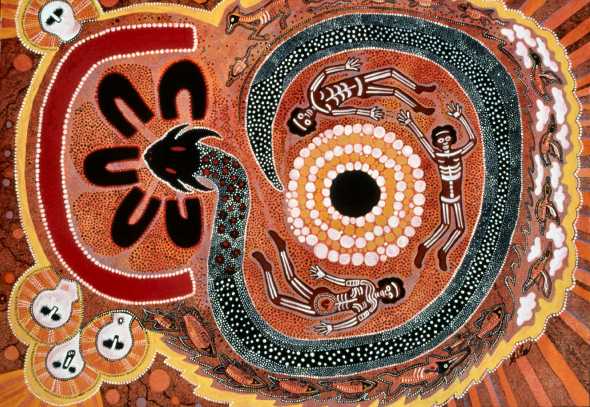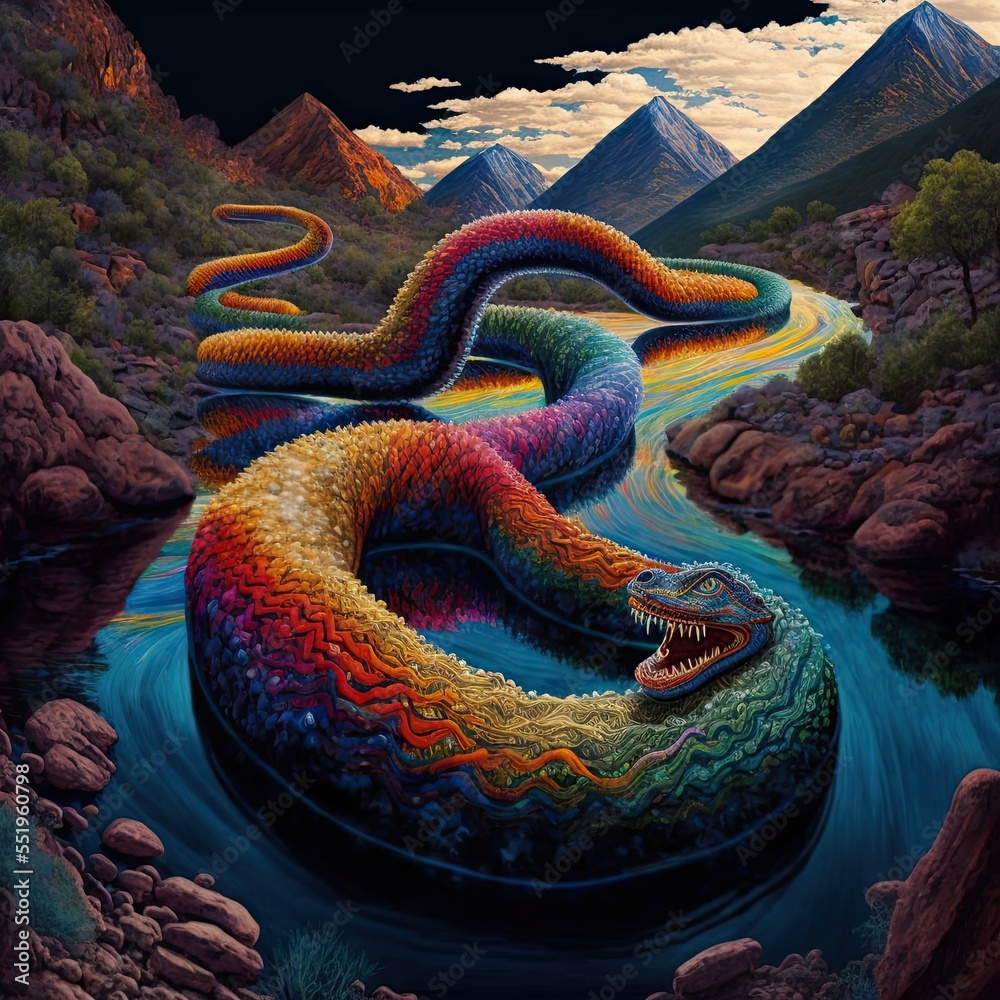Unraveling the Tapestry of Aotearoa: Exploring the Māori Creation Narrative and its Parallels with Aboriginal Dreamtime
Unraveling the Tapestry of Aotearoa: Exploring the Māori Creation Narrative and its Parallels with Aboriginal Dreamtime

New Zealand, known as Aotearoa in the Māori language, is a land steeped in ancient stories and rich cultural heritage. Central to the Māori worldview is the concept of Te Kore, the primordial void, from which all things emerged. This creation narrative, often referred to as "The Māori Creation Myth", parallels the Aboriginal Dreamtime in many ways, offering a fascinating glimpse into the shared ancestral roots of Polynesian and Aboriginal cultures.
Te Kore: A Journey from Void to Existence
Related Articles: Unraveling the Tapestry of Aotearoa: Exploring the Māori Creation Narrative and its Parallels with Aboriginal Dreamtime
- Unmasking The Tapestry: Exploring The Australian First Nations Map
- Unfurling The Colors Of Identity: The Meaning Behind The Aboriginal Flag
- The Lingua Franca Of The Land Down Under: Unveiling Australia’s Official Language
- The Dreaming: Unraveling The Timeless Tapestry Of Aboriginal Belief
- The Earth As Larder: How Indigenous Land Management Ensured Economic Survival
The Māori creation narrative begins with Te Kore, a state of nothingness, where potential existed but no form had yet emerged. From Te Kore, Te Po, the realm of darkness, arose, followed by Te Ao Marama, the realm of light. This journey from darkness to light represents the birth of the physical world, a process that involved the creation of the heavens, the earth, and all living things.
Rangi and Papa: The Sky Father and Earth Mother
Within Te Ao Marama, the primordial parents, Rangi (the sky father) and Papa (the earth mother), were born. They embraced, forming a vast, impenetrable darkness that prevented light from reaching the earth. Their offspring, the gods and goddesses of the Māori pantheon, grew weary of this suffocating darkness and sought to separate their parents.
The Separation of Rangi and Papa
The separation of Rangi and Papa, a pivotal moment in the creation narrative, is attributed to Tane, the god of forests and birds. Tane used his immense strength to push his parents apart, allowing light to flood the earth and giving birth to the world as we know it. This act of separation also gave rise to the diverse landscapes and ecosystems of Aotearoa.
The Birth of Humanity and the Importance of Whakapapa
The Māori creation narrative goes on to describe the birth of humanity from the union of the gods and goddesses. It emphasizes the importance of whakapapa, the genealogical system that connects all living beings to their ancestors. Whakapapa is a cornerstone of Māori culture, providing a framework for understanding identity, responsibilities, and relationships within the community.
Parallels with Aboriginal Dreamtime: A Shared Ancestral Tapestry

The Māori creation narrative shares striking similarities with the Aboriginal Dreamtime, the foundational story of Aboriginal cultures in Australia. Both narratives emphasize the importance of ancestral beings who shaped the land and its features, the creation of the universe from a state of primordial void, and the interconnectedness of all living things.
The Dreamtime: A Timeless Realm of Creation and Ancestral Spirits
In Aboriginal mythology, the Dreamtime is a timeless realm where ancestral beings, known as "Ancestral Spirits", created the universe, the land, and its inhabitants. These beings shaped the landscape, leaving their mark on the earth in the form of mountains, rivers, and rock formations. The Dreamtime is not a historical event but a continuous presence, influencing the lives of Aboriginal people and connecting them to their ancestors.
Similarities and Differences: A Comparative Look
While both the Māori creation narrative and the Aboriginal Dreamtime share fundamental themes, there are also notable differences:

- The Role of Ancestral Beings: While Māori mythology focuses on the creation of the world through the actions of gods and goddesses, Aboriginal Dreamtime emphasizes the role of Ancestral Spirits who shaped the land and its inhabitants.
- The Concept of Time: The Māori creation narrative is a linear account of events, while the Aboriginal Dreamtime is a timeless realm that exists beyond human understanding.
- The Emphasis on Land: The Aboriginal Dreamtime emphasizes the deep connection between Aboriginal people and the land, while the Māori creation narrative focuses on the creation of the world as a whole.

The Significance of These Creation Narratives: A Legacy of Cultural Identity
Despite these differences, both the Māori creation narrative and the Aboriginal Dreamtime play a fundamental role in shaping the cultural identities of their respective communities. They provide a framework for understanding the world, the place of humanity within it, and the importance of respecting and preserving the natural environment.
The Importance of Respect and Cultural Sensitivity:
It is crucial to approach these narratives with respect and cultural sensitivity. These stories are not mere myths but living traditions that continue to guide the lives of Māori and Aboriginal people today. It is important to acknowledge the cultural significance of these narratives and to engage with them in a way that honors their rich history and enduring legacy.
Conclusion: Unraveling the Tapestry of Ancestral Wisdom
The Māori creation narrative and the Aboriginal Dreamtime offer a fascinating glimpse into the shared ancestral roots of Polynesian and Aboriginal cultures. They provide a rich tapestry of stories, myths, and beliefs that have shaped the cultural identities of these communities for generations. By understanding these narratives, we gain a deeper appreciation for the diversity of human experience and the profound connection between humanity and the natural world.
FAQ
Q: What is the difference between the Māori creation narrative and the Aboriginal Dreamtime?
A: While both narratives share fundamental themes, there are key differences. The Māori creation narrative focuses on the actions of gods and goddesses, while the Aboriginal Dreamtime emphasizes the role of Ancestral Spirits. The Māori narrative is a linear account of events, while the Aboriginal Dreamtime is a timeless realm.
Q: Why are these creation narratives important?
A: These narratives provide a framework for understanding the world, the place of humanity within it, and the importance of respecting and preserving the natural environment. They also shape the cultural identities of Māori and Aboriginal people, connecting them to their ancestors and their traditions.
Q: How can I learn more about the Māori creation narrative and the Aboriginal Dreamtime?
A: You can find resources online, visit museums and cultural centers, and connect with Māori and Aboriginal communities. It is important to approach these narratives with respect and cultural sensitivity.
Q: Are there any other cultures with similar creation narratives?
A: Yes, many cultures around the world have creation narratives that reflect their unique perspectives on the origins of the universe and humanity. These stories often share common themes, such as the emergence of the world from a state of primordial void and the importance of ancestral beings.
Q: What are the implications of these narratives for contemporary society?
A: These narratives offer valuable insights into the interconnectedness of all living things and the importance of respecting the natural environment. They also emphasize the value of cultural diversity and the need to preserve traditional knowledge and practices.

Closure
Thus, we hope this article has provided valuable insights into Unraveling the Tapestry of Aotearoa: Exploring the Māori Creation Narrative and its Parallels with Aboriginal Dreamtime. We appreciate your attention to our article. See you in our next article!


